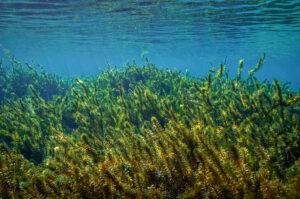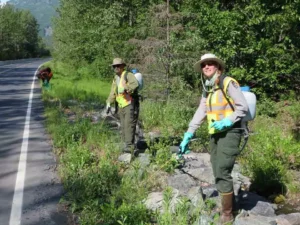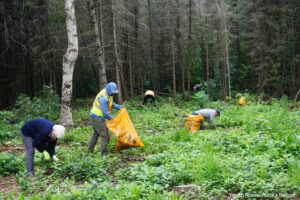Alaska Project Resources:

Alaska’s coastlines are incredibly diverse and ecologically rich. Until recently, extreme weather conditions and geographic isolation has protected the state from invasive species. However, climate change is creating more favorable conditions for invasive species to establish and spread in ecosystems that were historically inhospitable. For example, models show that the range of Hydrilla, an aquatic invasive plant that forms dense mats of vegetation, could extend to arctic waters by 2080.
Invasive species threaten many of Alaska’s coastal ecosystems and economic industries. Invasive species on barrier islands and sand dunes can lead to increased erosion and reduced protection against storm surges. European green crabs impact commercial important species outcompeting Dungeness crab for food and habitat, consuming juvenile Pacific oysters, and disturbing eelgrass beds that serve as valuable habitat for juvenile salmonids. Additionally, invasives can affect traditional subsistence practices of Alaska Native communities by impacting native fish, wildlife, and plant species that are integral to their cultures and diets.
Managing invasive species in Alaska
Between 2007 and 2011, approximately $6 million was spent annually in Alaska for invasive species management. With many remote islands and isolated communities, Alaska is particularly susceptible to invasive species introductions due to limited resources for monitoring and control. Therefore, prevention and early detection are crucial to protecting the diversity of the region.



Due to its isolation and extreme conditions, Alaska has been protected from many invasive species, but as the region warms and populations of invasive species expand, communities must prepare to combat them. In marine ecosystems, invasive species established or predicted to reach the Alaskan coasts include the European green crab, carpet sea squirt, the Northern Pacific seastar, spartina sp., Eurasian watermilfoil, colonial and golden star tunicate, waterweed, and wakame. Terrestrial invasives impacting wetlands, dunes, and other coastal habitats include cordgrass, purple loosestrife, reed canary grass, common tansy and European starlings. Non-native plant species displacing native vegetation, altering habitat, and destabilizing soil.


The best way for you to help prevent the spread of invasive species is to stop new outbreaks before they start. Each of us has a role in keeping our waterways clean and healthy for future generations. For example, the best way that you can help to prevent the spread of aquatic invasive species is to always clean your boat after use.
Early detection can help avoid many of the environmental and economic losses caused by invasive species. Reporting invasive species to the experts could stop the next invasion.
Report invasive species through the national Early Detection and Distribution Mapping System (EDDMapS), Alaska Fish & Game online or call 1-877-INVASIV, or download the Alaska Weed ID app.
Additionally, many states have invasive species reporting hotlines, online forms, or mobile apps. Using your internet browser, search with the terms “invasive species reporting [enter your state or county]” to discover how best to report in your area.

While invasive species pose major challenges, a number of management options exist. Prevention is important, but that is beyond the scope of this website. Physical or mechanical control, chemical control, cultural management, and biological control are all useful tools.
Removing invasive species and restoring native species brings myriad benefits. Restoration of wetlands, dunes, and other coastal areas protects against erosion, reduces flooding, and improves water quality. Native birds, fish, and other wildlife return to restored areas, enhancing fisheries and biodiversity. Habitat improvement helps the recovery of threatened or endangered species. Tourism and outdoor recreation benefit as people fish, bird watch, or visit wildlife areas.
What can you expect if you want to remove invasive species?
Invasive species removal can be a rewarding activity for any group of concerned citizens. One important role for local residents is participating in identification efforts to stop the spread of these species before they firmly take hold. However, as treatment/removal is unique to the plant species, it is best to consult a local expert to understand the likely long-term outcomes of your effort. Some species are easy to remove with hand pulling, but with other species infestations can be made worse by hand-pulling. Some plant species can only be substantially reduced using fire, or applying herbicides across large areas, in accordance with permits. Hunting and trapping can also play a role in managing invasive aquatic and terrestrial species.
Engaging communities, enhancing early detection and monitoring networks, increasing funding and resources, integrating traditional ecological knowledge, and habitat restoration are all important strategies for managing invasive species in Alaska.


We need your help to improve the Toolkit by completing our easy, 3-minute survey. Your insight is valuable to us.